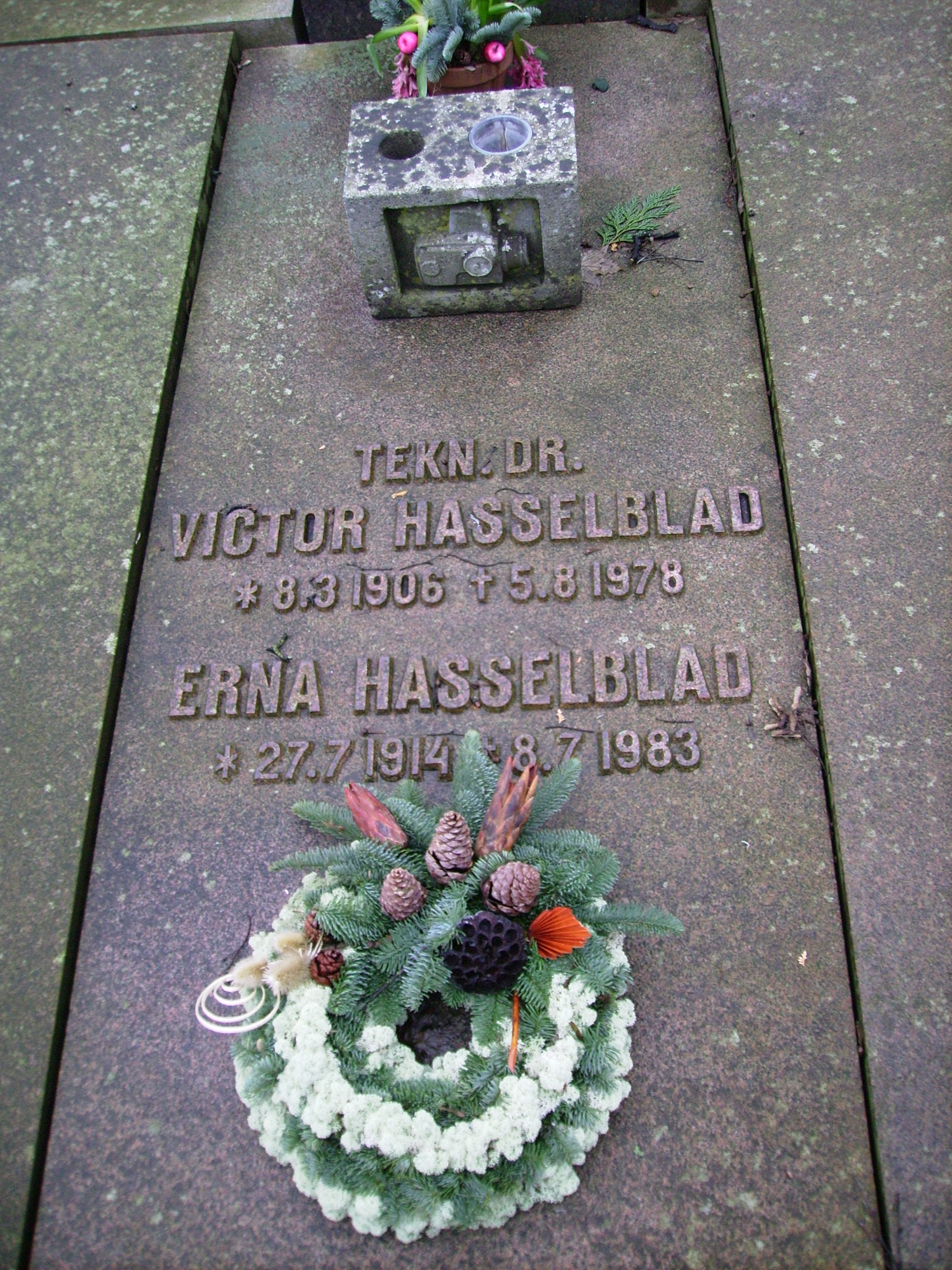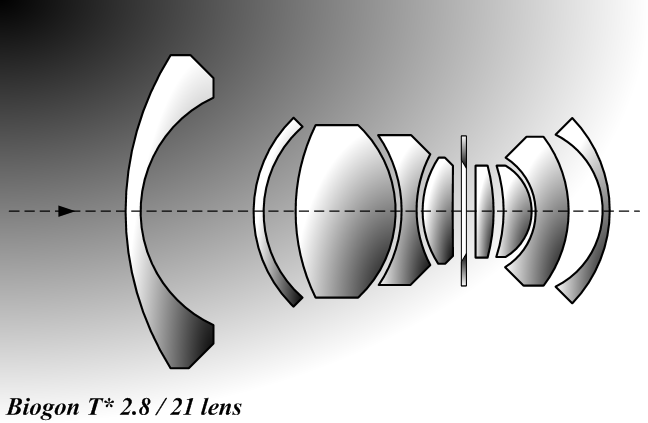|
Hasselblad
Victor Hasselblad AB is a Sweden, Swedish manufacturer of medium format (film), medium format cameras, photographic equipment and image scanners based in Gothenburg, Sweden. The company originally became known for its classic analog medium-format cameras that used a waist-level viewfinder. Perhaps the most famous use of the Hasselblad camera was during the Apollo program missions when the first humans Moon landing, landed on the Moon. Almost all of the still photographs taken during these missions used modified Hasselblad cameras. In 2016, Hasselblad introduced the world's first digital compact mirrorless medium-format camera, the X1D-50c, changing the portability of medium-format photography. Hasselblad produces about 10,000 cameras a year from a small three-storey building. Company history The company was established in 1841 in Gothenburg, Sweden, by Fritz Wiktor Hasselblad, as a trading company, F. W. Hasselblad and Co. The founder's son, Arvid Viktor Hasselblad, was inte ... [...More Info...] [...Related Items...] OR: [Wikipedia] [Google] [Baidu] |
Victor Hasselblad
Victor Hasselblad (8 March 1906 – 5 August 1978) was a Swedish inventor and photographer, known for inventing the Hasselblad 6x6 cm medium format camera. Life and work Hasselblad was born in Gothenburg. In 1940 Swedish Air Force officers requested Hasselblad to construct a camera that rivaled the one found in a German reconnaissance In military operations, military reconnaissance () or scouting is the exploration of an area by military forces to obtain information about enemy forces, the terrain, and civil activities in the area of operations. In military jargon, reconnai ... aircraft shot down over Sweden. Hasselblad founded the Victor Hasselblad AB company in 1941 to produce cameras for the Swedish Air Force. Hasselblad was famous for always trying out Hasselblad AB's new camera models by photographing birds. For example, Hasselblad 2000 was tried a week at Nidingen, the only place in Sweden where the black-legged kittiwake nests. By 1948, the company introd ... [...More Info...] [...Related Items...] OR: [Wikipedia] [Google] [Baidu] |
Medium Format (film)
Medium format has traditionally referred to a film format in photography and the related cameras and equipment that use film. Nowadays, the term applies to film and digital cameras that record images on media larger than the used in 35 mm photography (though not including 127 sizes), but smaller than (which is considered large format photography). In digital photography, medium format refers either to cameras adapted from medium-format film photography uses or to cameras making use of sensors larger than that of a 35 mm film frame. Some of the benefits of using medium-format digital cameras include higher resolution sensors, better low-light capabilities compared to a traditional 35mm DSLR, and a wider dynamic range. Characteristics Medium-format cameras made since the 1950s are generally less automated than smaller cameras made at the same time. For example, autofocus became available in consumer 35 mm cameras in 1977, but did not reach medium forma ... [...More Info...] [...Related Items...] OR: [Wikipedia] [Google] [Baidu] |
Carl Zeiss AG
Zeiss ( ; ) is a German manufacturer of optical systems and optoelectronics, founded in Jena, Germany, in 1846 by optician Carl Zeiss. Together with Ernst Abbe (joined 1866) and Otto Schott (joined 1884) he laid the foundation for today's multinational company. The current company emerged from a reunification of Carl Zeiss companies in East and West Germany with a consolidation phase in the 1990s. ZEISS is active in four business segments with approximately equal revenue (Industrial Quality and Research, Medical Technology, Consumer Markets and Semiconductor Manufacturing Technology) in almost 50 countries, has 30 production sites and around 25 development sites worldwide. Carl Zeiss AG is the holding of all subsidiaries within Zeiss Group, of which Carl Zeiss Meditec AG is the only one that is traded at the stock market. Carl Zeiss AG is owned by the foundation Carl-Zeiss-Stiftung. The Zeiss Group has its headquarters in southern Germany, in the small town of Oberkochen, ... [...More Info...] [...Related Items...] OR: [Wikipedia] [Google] [Baidu] |
Cameras
A camera is an instrument used to capture and store images and videos, either digitally via an electronic image sensor, or chemically via a light-sensitive material such as photographic film. As a pivotal technology in the fields of photography and videography, cameras have played a significant role in the progression of visual arts, media, entertainment, surveillance, and scientific research. The invention of the camera dates back to the 19th century and has since evolved with advancements in technology, leading to a vast array of types and models in the 21st century. Cameras function through a combination of multiple mechanical components and principles. These include exposure control, which regulates the amount of light reaching the sensor or film; the lens, which focuses the light; the viewfinder, which allows the user to preview the scene; and the film or sensor, which captures the image. Several types of camera exist, each suited to specific uses and offering unique cap ... [...More Info...] [...Related Items...] OR: [Wikipedia] [Google] [Baidu] |
Zeiss Biogon
Biogon is the brand name of Carl Zeiss for a series of photographic camera lenses, first introduced in 1934. Biogons are typically wide-angle lenses. History ''Biogon'' (I), 1934 File:Bertele-Zeiss Biogon (1934).svg, Zeiss ''Biogon'' by Bertele (1934), from US 2,084,309 File:Bertele US2549159A (Aviotar, 1947).svg, Wild ''Aviotar'' by Bertele (1947), from US 2,549,159 File:Jupiter-12 (Contax-Kiev lens mount).JPG, KMZ ''Jupiter-12'' lens The first ''Biogon'' lens (2.8 / 3.5 cm, an asymmetric design featuring seven elements in four groups) was designed in 1934 by Ludwig Bertele while he was working for Zeiss, as a modification of his earlier '' Sonnar'' design (1929). The ''Biogon'' was assigned to Zeiss Ikon Dresden and marketed with the Contax rangefinder camera. It was produced by Carl Zeiss starting in approximately 1937, first in Jena, then a redesigned version was built in Oberkochen. Bertele would go on to reuse the design for the Wild ''Aviotar''. After ... [...More Info...] [...Related Items...] OR: [Wikipedia] [Google] [Baidu] |
Sixten Sason
Karl-Erik Sixten Sason (born Sixten Andersson; 1912–1967) was a Swedish industrial designer, noted for his work in designing several generations of Saab automobiles. Biographical Sason was born in 1912, the son of a Swedish sculptor. He trained in Paris as an artist and later as an industrial designer. He had a stint in the Swedish Air Force until an injury disqualified him for flight. In the 1930s he became noted for his "x-ray" renderings of industrial products. Career with Saab Sason started working for Saab, designing aircraft throughout World War II. In 1946, he was asked to contribute to Project 92, the result of which would be the first Saab automobile, the Saab 92 which began production in 1949. Sason remained with Saab, designing the 93, 95, 96, and 99, as well as the first Sonett. Following his death in 1967, Sason was succeeded by his colleague and one-time student, Björn Envall. Many of the design elements that Sason implemented in the 99 continued ... [...More Info...] [...Related Items...] OR: [Wikipedia] [Google] [Baidu] |
Camera Lens
A camera lens, photographic lens or photographic objective is an optical lens (optics), lens or assembly of lenses (compound lens) used in conjunction with a camera body and mechanism to Imaging, make images of objects either on photographic film or on other media capable of storing an image Photosensitivity, chemically or Image sensor, electronically. There is no major difference in principle between a lens used for a still camera, a video camera, a telescope, a microscope, or other apparatus, but the details of design and construction are different. A lens might be permanently fixed to a camera, or it might be interchangeable lens camera, interchangeable with lenses of different focal lengths, apertures, and other properties. While in principle a simple lens, simple convex lens will suffice, in practice a compound lens made up of a number of optical lens elements is required to correct (as much as possible) the many optical aberrations that arise. Some aberrations will be prese ... [...More Info...] [...Related Items...] OR: [Wikipedia] [Google] [Baidu] |
Ludwig Bertele
Ludwig Jakob Bertele (25 December 1900 – 16 November 1985) was a German optics constructor. His developments received universal recognition and serve as a basis for considerable part of the optical designs used today. Biography Ludwig Jakob Bertele was born 25 December 1900 in Munich, to an architect's family. At Ernemann In 1916, Bertele was employed as the assistant of an optics designer at Rodenstock in Munich. In 1919, he moved to Dresden to work for Heinrich Ernemann at under the supervision of August Klughardt, as a designer of optics. In the same year, Bertele would begin the development of the ' design. Its basis was the optical scheme of the Ultrastigmat cinema lens, a modified Cooke triplet, which had been developed by Charles C. Minor in 1916 and produced by Gundlach Company. The main purpose of Bertele's developmental work was to increase the light-gathering power of a lens as well as diminishing optical aberration. In 1923, after four years of development, ... [...More Info...] [...Related Items...] OR: [Wikipedia] [Google] [Baidu] |
Gothenburg
Gothenburg ( ; ) is the List of urban areas in Sweden by population, second-largest city in Sweden, after the capital Stockholm, and the fifth-largest in the Nordic countries. Situated by the Kattegat on the west coast of Sweden, it is the gubernatorial seat of Västra Götaland County, with a population of approximately 600,000 in the city proper and about 1.1 million inhabitants in Metropolitan Gothenburg, the metropolitan area. Gustavus Adolphus, King Gustavus Adolphus founded Gothenburg by royal charter in 1621 as a heavily fortified, primarily Dutch, trading colony. In addition to the generous privileges given to his Dutch allies during the ongoing Thirty Years' War, e.g. tax relaxation, he also attracted significant numbers of his German and Scottish allies to populate his only town on the western coast; this trading status was furthered by the founding of the Swedish East India Company. At a key strategic location at the mouth of the , where Scandinavia's largest dr ... [...More Info...] [...Related Items...] OR: [Wikipedia] [Google] [Baidu] |
Slide Projector
A slide projector is an optical device for projecting enlarged images of photographic slides onto a screen. Many projectors have mechanical arrangements to show a series of slides loaded into a special tray sequentially. 35 mm slide projectors, direct descendants of the larger-format magic lantern, first came into widespread use during the 1950s for slide shows as home entertainment, and for use by educational and other institutes. Reversal film created a small positive projectable image rather than the negatives used since the early days of photography; photography now produced 35mm directly viewable small colour slides, rather than large monochrome negatives. The slide images were too small for unaided viewing, and required enlargement by a projector or enlarging viewer. Photographic film slides and projectors have been replaced by image files on digital storage media shown on a projection screen by using a video projector, or displayed on a large-screen video ... [...More Info...] [...Related Items...] OR: [Wikipedia] [Google] [Baidu] |






